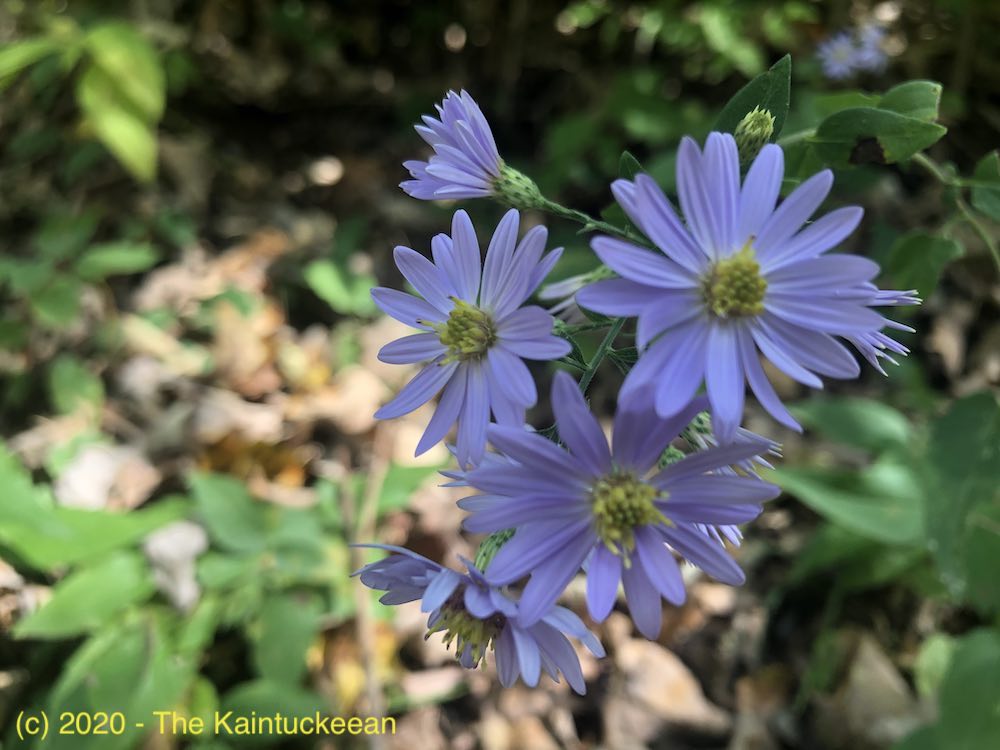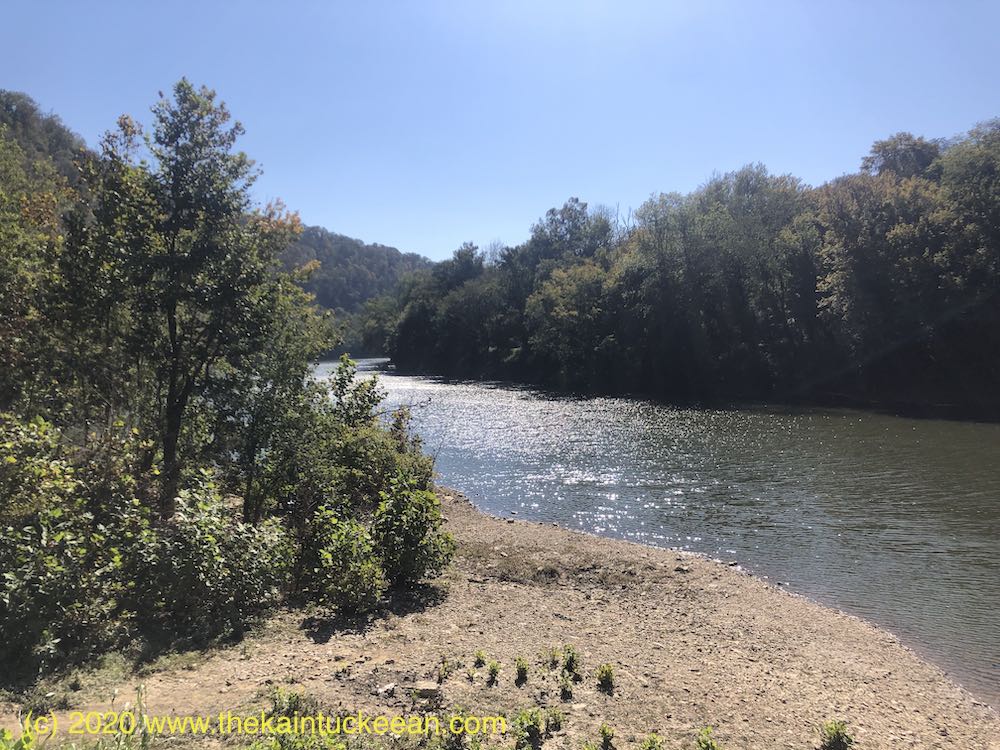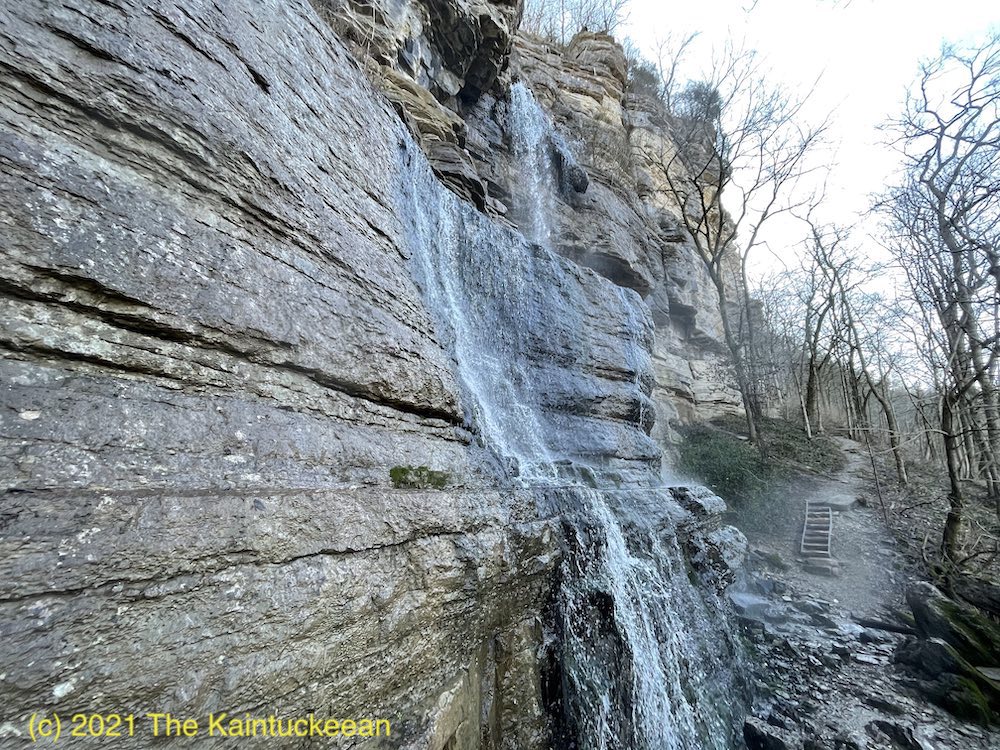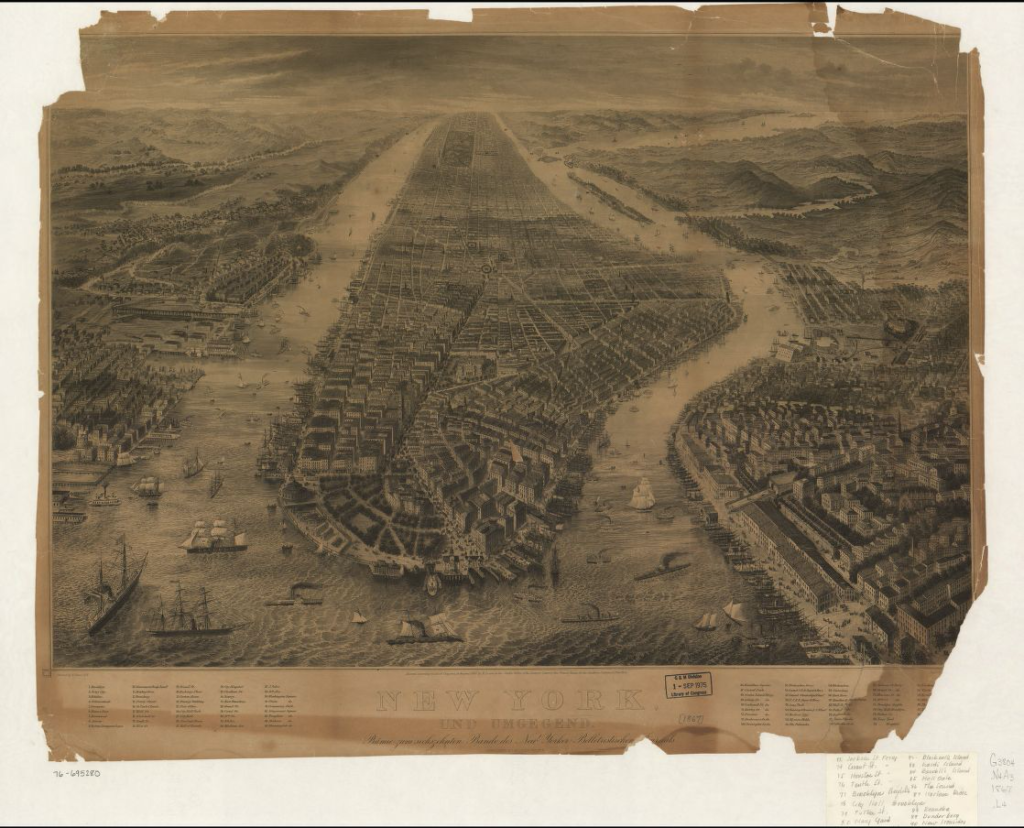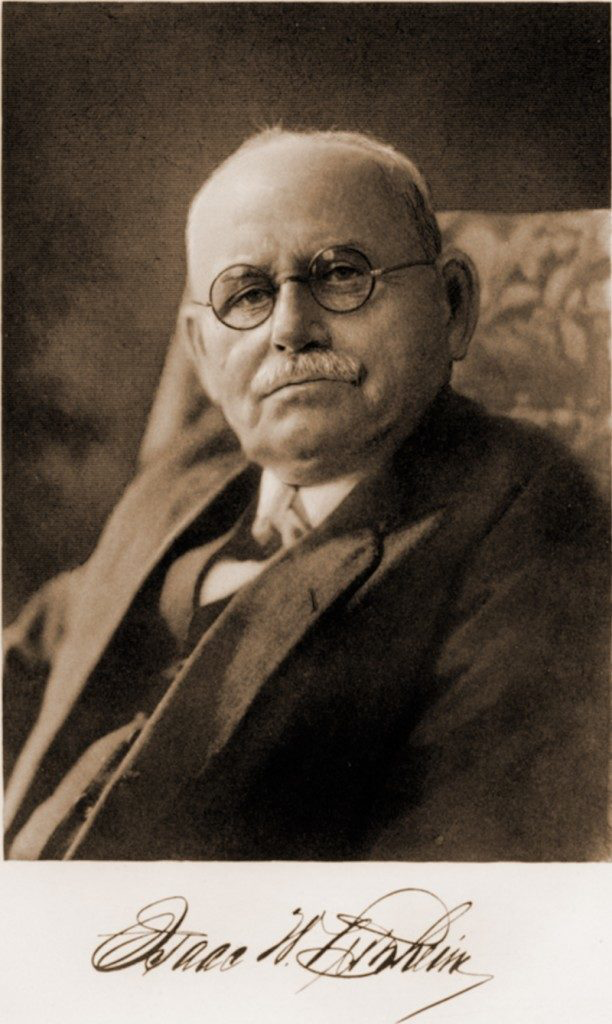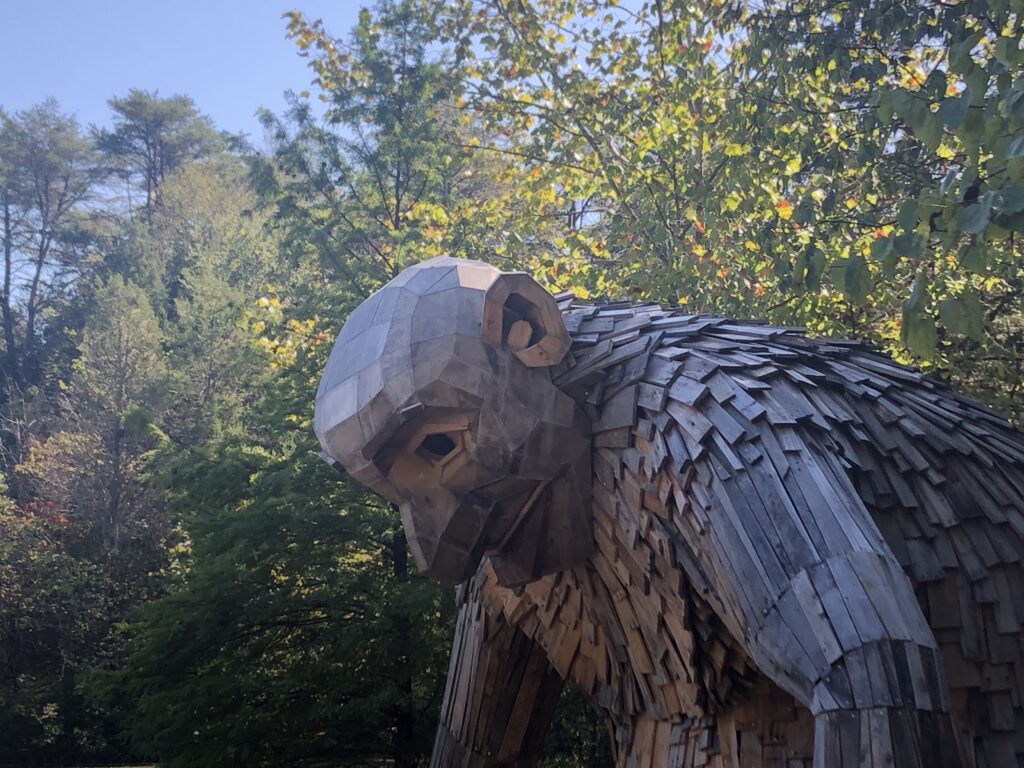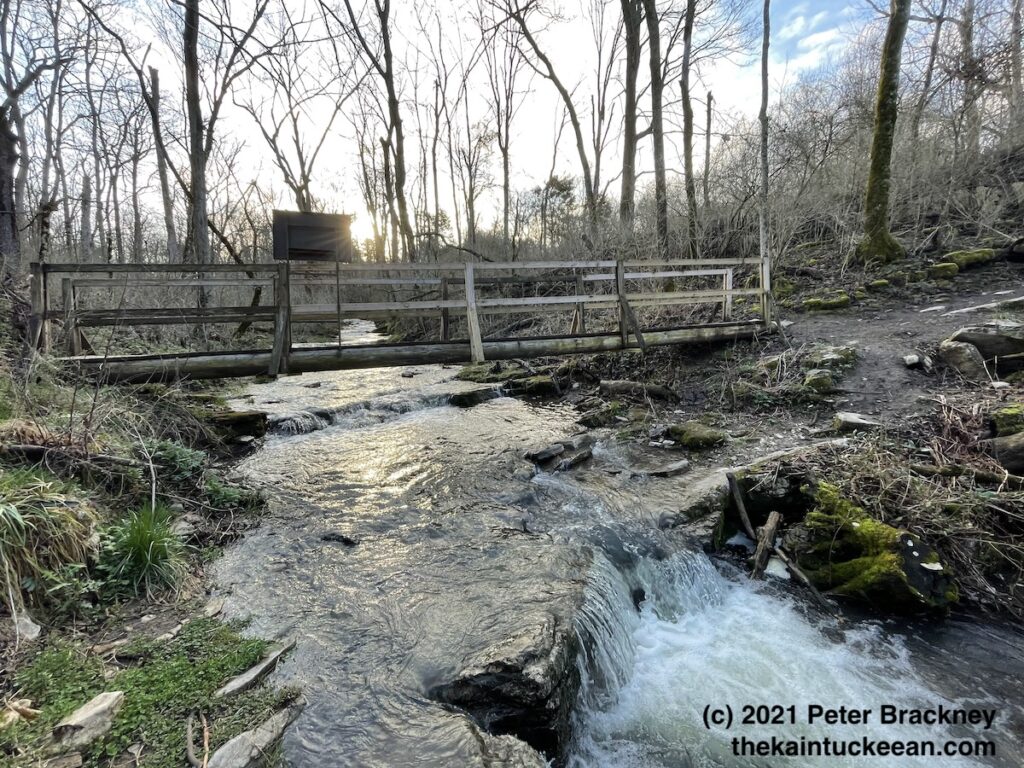
For several years I have heard about the beautiful Jessamine Creek Gorge that cuts through central Jessamine County on its way to the Kentucky River. Part of the Kentucky River Palisades region, rocks exposed along this tributary are also magnificent.
Strong rains had fallen during midweek through Thursday, so a Friday morning hike seemed like the optimal time to explore this resource so close to Lexington. Adding to the enjoyment was the late winter date as some have commented that the trail becomes both overcrowded and overgrown later in the season. I dealt with neither, however, and thus had a splendid experience. The flora later in the season is also said to spectacular, so it may be another example of beauty being in the eye of the beholder.

Before saying more, I ought to reiterate this word of caution from the Jessamine County Trails Association:
Jessamine Creek Gorge is an ecologically sensitive area. Please observe local ordinances and park rules. Stay on the marked trail. No trespassing onto neighboring properties. Don’t leave trash in the preserve. There is a trash can at the parking lot. Park in the parking lot. Do not park anywhere along the road other than the parking lot. Ignoring the rules may result in the preserve being closed to visitors by Jessamine County Fiscal Court.
The trail itself is a little politically sensitive so following these rules is über-critical. Like staying on marked trails: yes, there’s an amazing 76-foot waterfall on Overstreet Creek. No, you can’t see it from the trail. Deal with it. There’s plenty more beauty to enjoy.
Jessamine’s Etymology
Jessamine County was carved from Fayette County in 1798. It was named after a flower that grew along the banks of the creek which already bore the name from an Indian tongue. Other accounts suggest that the county was named after the daughter of a settler, Jessamine, was scalped near the site. The naming of Jessamine County is unique under either story as it traditionally considered the only Kentucky county with a feminine name.
Under either account, the creek and the county around it are beautiful. These words appeared in the Lexington Leader on May 31, 1897: “Jessamine Creek is one of the most beautiful streams in Kentucky. It is not the unusually beautiful scenery along the banks of the creek, or its soft, clear limestone water which makes it an object of so much interest; but the stories of the many sad tragedies which have been enacted along its banks and in its waters.”
Dam Jessamine Creek?
In an attempt to control massive flooding along the Kentucky River, a proposal during the 1940s and 1950s would have seen a 148-foot tall dam constructed along the Kentucky River near the mouth of Jessamine Creek. According to a publication by the Army Corp of Engineers, Engineering the Kentucky River: The Commonwealth’s Waterway, such a construction project would have “submerged 21,500 acres of the Kentucky valley and ended navigation of the river upstream of Lock No. 7.”
Preservationists and others decried the project and it thus never received Congressional funding and never was constructed. Instead, levees and floodwalls were utilized to protect the Capital City (which was the main purpose for the proposal). Although the Jessamine Creek Dam project was first initiated in the early 1940s, it was finally killed in 1962. The timeline mirrored Frankfort’s Craw neighborhood.
A Beautiful Hike
It is said that a picture is worth a thousand words. When it comes to these hikes, I’d argue that a short video is worth a thousand pictures. Enjoy and please share your experiences of hiking at Jessamine Creek Gorge in the comments!



